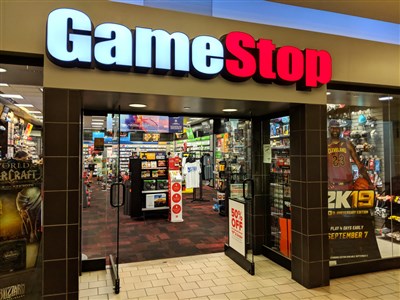
If there was any company that wouldn't survive 2020, and the catastrophe that was the pandemic, GameStop (NYSE:GME) probably would have made quite a few lists. Yet, as has happened many times before in history, it's a bad idea to count out the underdog, as GameStop shares continue to ramp up the rally they've been in for the last couple of weeks now.
Short Covering Gives GameStop a Serious Boost
The numbers for GameStop stock of late have been almost unfathomable. The company currently trades at $87.80 a share. Just for the month of January, reports note, the company has seen a 245% increase in its share price, and for a company that was on death's door a few months ago with a share price of around $6, the gains have been astonishing.
Interestingly, pulling back for a view of share prices for the last six months shows a company that's been on its last legs but struggling for survival. Share prices have been on the rise since at least August 2020, when they were down in the $4 range, but were beginning a climb even then. The climb was much slower, certainly—GameStop spent most of November trading in the $11 range—but when a company's stock price triples in three months, that's something to pay attention to.
While the latest run-up is certainly due in large part to issues of short-selling, some also cite a steadily-growing demand for video games in the midst of the everything-at-home movement prompted by the COVID-19 pandemic. Indeed, the recent releases of the PlayStation 5 from Sony (NYSE:SNE) and Microsoft's (NASDAQ:MSFT) Xbox Series X have been winners for all connected to same, as units fly off shelves and demand remains high even months after release.
Analysts Remain Skeptical
Meanwhile, the news out of the larger analyst pool—based on our latest research—isn't nearly so encouraging. The company remains a “hold” based on the latest consensus, and increasingly remains so. The current count stands at three “sell” ratings and four “hold” ratings, a ratio which actually represents the most bearish figure seen in the last six months. The closest we've seen to this was six months ago, when the company had three “sell” ratings and five “hold” ratings.
The price target, meanwhile, has been set at $9.79, and has been there for the last month. Granted, that's an improvement over the target three months ago of $7.31, and certainly better than six months ago with its target of $4.03, but nowhere near the $87+ we're seeing today.
What's more, specific analysts are starting to emerge and note that the massive rally seen at GameStop is likely to be temporary at best. Telsey Advisory Group cut its rating from “outperform” to “underperform,” a two-step drop in rating. Telsey noted that there was a “...disconnect between fundamentals and valuation,” and much of the huge run-up in pricing was connected to short action and “...speculation by retail investors on forecasts for the new gaming cycle.” Just two weeks ago, Standpoint Research cut its outlook from “buy” to “hold” as well, and that's been all the action for GameStop on the analyst front for 2020 so far. The last time GameStop saw anything like good news was back in December, as Wedbush doubled its price target from $8 to $16.
A Temporary Phenomenon
Admittedly, the troubles that plagued GameStop back in the early days of 2020—wide-scale and rampant store closures, police being sent to close stores and GameStop requiring employees to challenge said police officers with referrals to the company's legal team, and just what an “essential business” really is anyway—aren't near so pronounced today. However, while certainly demand for video games is on the rise, the question is whether or not people will continue buying them from GameStop locations.
GameStop has benefited from the explosion of new console sales. That's evident by how frequently out of stock they've been. It's been no different at Target (NYSE:TGT), Walmart (NYSE:WMT), or several other retailers who carried the systems. To suggest that GameStop has benefited sufficiently to justify a 12-fold rise in share prices since August, however, might be a bridge too far.
The short-selling gains aren't likely to stick around forever, and when those burn away, the stock is likely to reassert its true value, last seen somewhere around early December of 2020. It's probably a good idea to take any profit you've made as a result of the short selling now, before the share price notices how high up it actually is.
Companies in This Article: